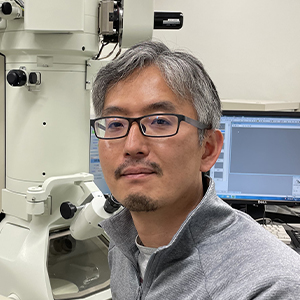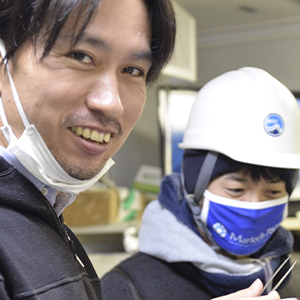Press release with author’s message
— From ArCS II News Letter No.6 —
In ArCS II Newsletter No.6, the authors of articles published in 2022 spring and fall contributed their research, thoughts on their research, and future prospects.
*Affiliations are at the time of the newsletter publication.
Why Can Diverse Plants Coexist? Discovering Patterns Along Latitudes

Keita Nishizawa
(Research Center for Advanced Science and Technology, The University of Tokyo)
It is easy to imagine why different plants can be found in different regions and environments (e.g., Japan and the Arctic). On the other hand, in reality, many kinds of plants coexist in the same region and environment. The factors that lead to this coexistence (e.g., interspecific relationships and dispersal restrictions) differ from region to region, and no general rule has been obtained. In this study, by collecting and integrating studies from all over the world, we discovered that the main factors which lead to local coexistence changed with latitude.
| Title | The latitudinal gradient in plant community assembly processes : A meta-analysis |
| Journal | Ecology Letters |
| Published | May 26,2022 |
| Authors | Keita Nishizawa, Naoto Shinohara, Marc W. Cadotte, Akira S. Mori |
| DOI | https://doi.org/10.1111/ele.14019 |
Press Release(only in Japanese)
Meteoritic Materials Within Sulfates Are Detected from Aerosol Particles Using Transmission Electron Microscopy

Kouji Adachi
(Department of Atmosphere, Ocean, and Earth System Modeling Research, Meteorological Research Institute)
Meteorites impact all over the Earth’s atmosphere, including the Arctic. It has been known that they fractionalize and ablate, generating small aerosol particles. However, we did not understand how they occur in the atmosphere or mix within individual particles. This study first revealed their shape and mixing states within sulfate particles using transmission electron microscopy (TEM) and detected Fe, Mg, and other key elements (e.g., Ni, Cr, and Al) that contain meteoritic materials. This study provides observational evidence for the linkage between extraplanetary materials and tropospheric aerosols and is a key to understanding the climate influences of meteoritic materials.
| Title | Meteoritic materials within sulfate aerosol particles in the troposphere are detected with transmission electron microscopy |
| Journal | Communications Earth & Environment |
| Published | June 16, 2022 |
| Authors | Kouji Adachi, Naga Oshima, Nobuyuki Takegawa, Nobuhiro Moteki, Makoto Koike |
| DOI | https://doi.org/10.1038/s43247-022-00469-8 |
Press Release(only in Japanese)
Discovery of a Novel Type of Phytoplankton Bloom in the Arctic Shelf Region: The Widespread Occurrence with the Recent Sea Ice Loss

Takuhei Shiozaki (Photo: Left)
(Atmosphere and Ocean Research Institute, The University of Tokyo)
Amane Fujiwara (Photo: Right)
(Institute of Arctic Climate and Environment Research, JAMSTEC)
Phytoplankton are primary producers in the ocean; organisms that form the basis of the ecosystem. Their production is generally highest near the surface, and therefore is monitored globally by satellite observation. We found that, contrary to this conventional notion, phytoplankton blooms can also occur near the seafloor in summer in the Arctic Ocean. This bloom is triggered by light reaching the shallow seafloor underlying nutrient- rich bottom water. Since this bloom cannot be detected by surface observation, satellite observation significantly underestimates the regional primary production. We also found that the hidden bottom-associated blooms can be now widespread across the Arctic Ocean with the recent sea ice loss.
| Title | Bottom-associated phytoplankton bloom and its expansion in the Arctic Ocean |
| Journal | Global Change Biology |
| Published | September 27, 2022 |
| Authors | Takuhei Shiozaki, Amane Fujiwara, Koji Sugie, Shigeto Nishino, Akiko Makabe, Naomi Harada |
| DOI | https://doi.org/10.1111/gcb.16421 |
Press Release
Abundance of Microplastics Suspended and Entering the Chukchi Sea was Estimated

Takahito Ikenoue
(Research Institute for Global Change, JAMSTEC)
Understanding the dynamics of microplastics (MPs) in the Chukchi Sea, the gateway to the Arctic Ocean, has been an urgent issue. We estimated for the first time the abundance of MPs suspended in the seawater of the Chukchi Sea and the inflow of MPs from the Pacific Ocean, based on observation data. Our results suggest that most of the MPs from the Pacific Ocean are not in the seawater of the Chukchi Sea, but are accumulated in sea ice, seafloor sediments, or in the downstream regions of the Pacific-origin water. We will continue to promote our research and the accumulation of knowledge that will contribute to policy recommendations.
| Title | Horizontal distribution of surface microplastic concentrations and water-column microplastic inventories in the Chukchi Sea, western Arctic Ocean |
| Journal | Science of the Total Environment |
| Published | November 1, 2022 |
| Authors | Takahito Ikenoue, Ryota Nakajima, Amane Fujiwara, Jonaotaro Onodera, Motoyo Itoh, JunkoToyoshima, Eiji Watanabe, Akihiko Murata, Shigeto Nishino, Takashi Kikuchi |
| DOI | https://doi.org/10.1016/j.scitotenv.2022.159564 |
Press Release
